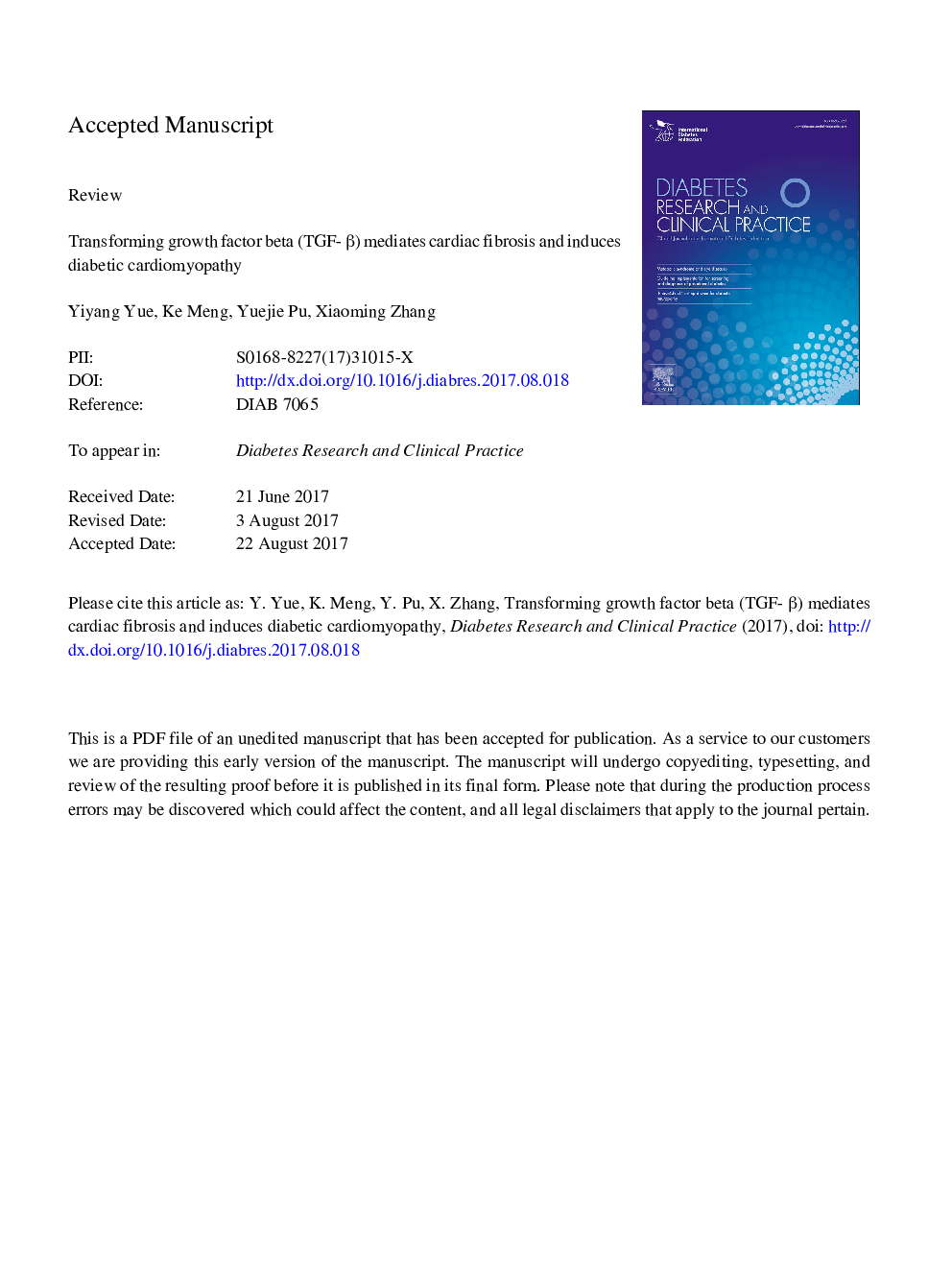| Article ID | Journal | Published Year | Pages | File Type |
|---|---|---|---|---|
| 8630442 | Diabetes Research and Clinical Practice | 2017 | 16 Pages |
Abstract
Cardiovascular diseases account for the major cause of morbidity and mortality among individuals with diabetes. The diabetic cardiomyopathy (DCM) is a type of diabetic cardiovascular disease, which further directs to the heart failure. The researchers found that diabetes induced cardiac fibrosis plays a vital role in several of the pathological changes that associated with DCM, causing left ventricular hypertrophy (LVH), diastolic dysfunction and systolic dysfunction. However, the mechanisms involved in the pathogenesis of DCM are still elusive. Many studies have demonstrated that the transforming growth factor beta (TGF-β) is one of the molecular mediators implicated in the progression of fibrogenesis. In diabetes, hyperglycemia causes the expression changes of microRNAs (miRNAs), long non-coding RNAs (lncRNAs), TGF-β genes, TGF-β proteins and their receptors. Activated TGF-β further leads to cardiac fibrosis, which in turn inducing DCM through the SMAD-dependent and independent pathways. Here, we reviewed the the molecular pathways that activate TGF-β then leading to cardiac fibrosis, which induced the pathological changes of DCM. Illustrating the pathways of TGF-à would propose an efficient way for the management of diabetic cardiomyopathy (see Fig. 1).
Keywords
Related Topics
Life Sciences
Biochemistry, Genetics and Molecular Biology
Endocrinology
Authors
Yiyang Yue, Ke Meng, Yuejie Pu, Xiaoming Zhang,
